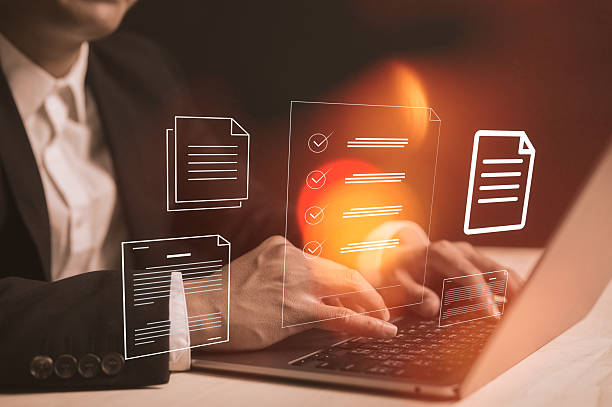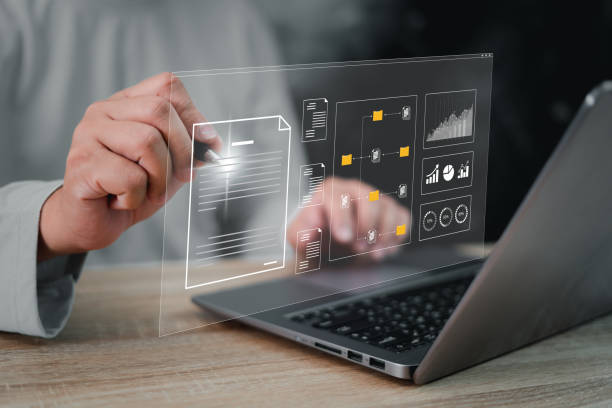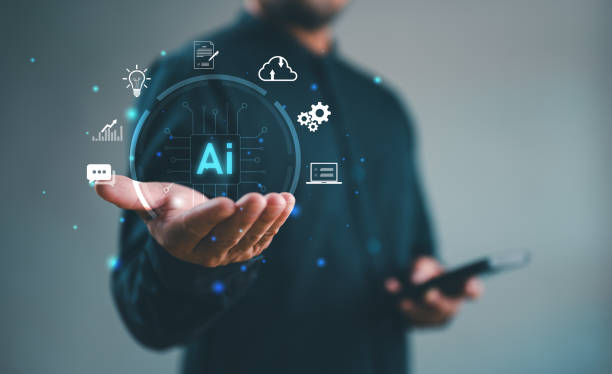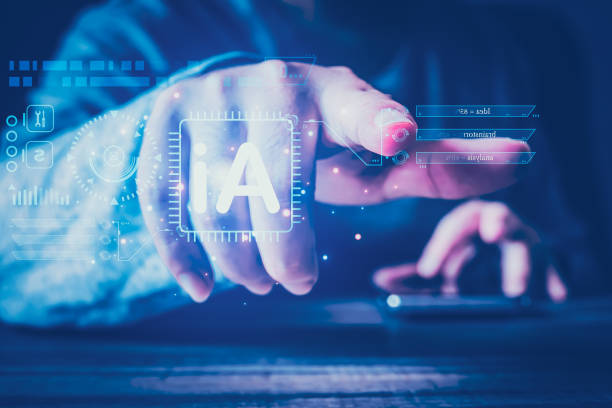Introduction to On-Page SEO and its Critical Importance
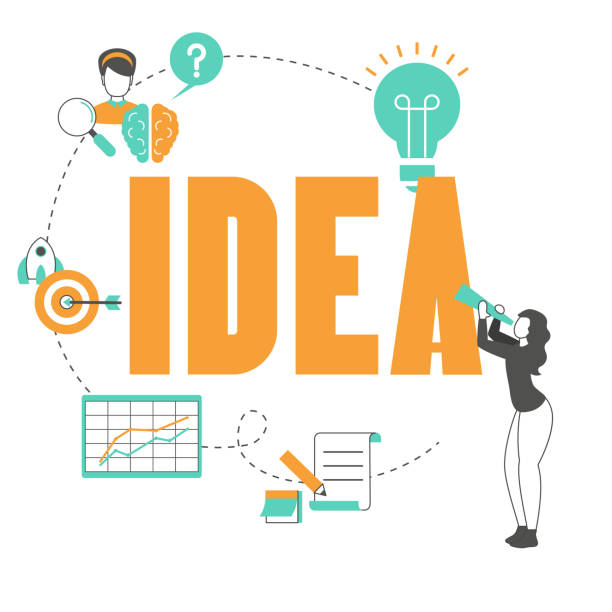
In today’s highly competitive digital world, being seen amidst a plethora of websites and content is a major challenge.
In this regard, #On_Page_SEO or #On_Page_Optimization plays a crucial role as one of the most important pillars of digital marketing strategy.
This aspect of search engine optimization focuses on all elements within your website; from text to technical structure and user experience.
The main goal of on-page SEO is to send clear and distinct signals to search engines like Google so they can best understand, rank, and display your content to relevant users.
Without sufficient attention to this aspect, even if you have produced the best content in the world, you may never reach your target audience.
The main difference between on-page SEO and off-page SEO (Off-Page SEO) is that you have complete control over all its factors.
This allows you to see tangible results in improving your website’s ranking and increasing organic traffic by correctly implementing techniques.
From page titles and meta descriptions to URL structure, image optimization, and site loading speed, each of these factors directly impacts search engines’ understanding of your content and ultimately your position in search results.
In this comprehensive guide, we will professionally and instructively cover all aspects of on-page SEO to help you on your path to online success.
Stay with us to discover advanced and practical techniques in this field.
Did you know that 94% of the first impression of a company is related to its website design?
Rasavob helps you create the best first impression by offering professional corporate website design services.
✅ Create a professional and trustworthy image for your brand
✅ Easily attract potential customers and improve online standing
⚡ Get free corporate website design consultation
Keyword Research for Effective and Targeted On-Page SEO
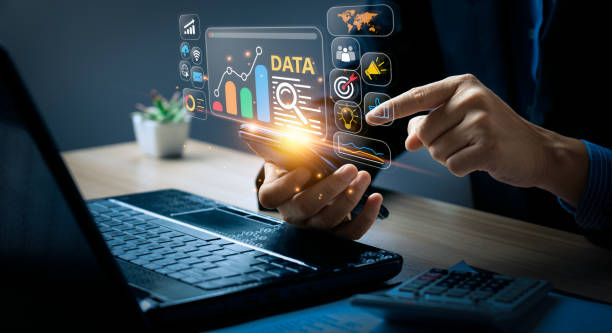
The foundation of every successful #On_Page_SEO strategy is comprehensive and precise keyword research.
Without identifying the words your target audience searches for to find your products or services, any optimization effort will be fruitless.
This specialized process involves finding words and phrases that not only have a suitable search volume but also perfectly match your content and effectively cover user intent.
Various tools such as Google Keyword Planner, Ahrefs, Semrush, and KWFinder can assist you on this path.
But beyond the tools, understanding user needs and thinking like them is the key to success.
When choosing keywords, you should pay special attention to “Search Intent”.
Is the user looking for information (informational intent)? Does he want to buy (commercial intent)? Or is he looking for a specific website (navigational intent)? Choosing keywords that match search intent not only helps improve your ranking but also attracts higher-quality visitors who are more likely to convert into customers.
In addition to short-tail keywords, using long-tail keywords is also very important.
These longer phrases usually have lower search volume but indicate a more specific search intent and have a higher conversion rate.
By focusing on precise and targeted #Keyword_Research, you take the first powerful step in optimizing your on-page SEO and lay the groundwork for producing valuable content.
Optimizing Content and Page Structure for Search Engines
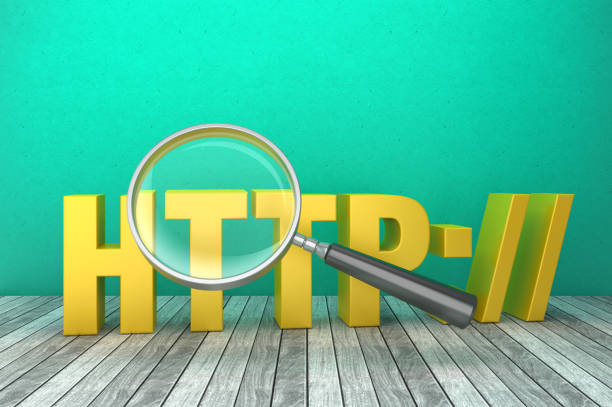
After selecting appropriate keywords, the next step in #On_Page_SEO is optimizing the content and structure of each page on your website.
This section includes several key elements that all help search engines better understand your content and improve the user experience.
The first and most important element is the Title Tag, which should contain the main keyword and be engaging, encouraging users to click.
The Meta Description, although not directly influential in ranking, plays an important role in increasing the click-through rate (CTR) in search results.
The structure of headings (H1, H2, H3, …) is also vital for organizing content and improving readability.
H1 should include the main keyword and be used only once per page.
Subsequent headings are used to segment content and cover subtopics.
Keyword density should be natural, and excessive repetition (Keyword Stuffing) should be avoided.
Also, your content must be comprehensive, valuable, and responsive to user needs.
Using images and videos with appropriate Alt tags, optimizing URLs, and ensuring text readability are other important aspects of content optimization.
The goal is to provide optimized and valuable content for both search engines and users.
In the following, a comparative table of content optimization techniques for #On_Page_SEO is provided:
| Optimization Element | Description and Importance | Key Tips for On-Page SEO |
|---|---|---|
| Title Tag | The first thing users see in search results. Very important for CTR and ranking. |
Includes main keyword, max 60 characters, appealing and enticing. |
| Meta Description | A short summary of the content displayed below the title in search results. | Around 150-160 characters, includes keyword, enticing for clicks. |
| Heading Tags (H1-H6) | Structuring content, improving readability and search engine understanding. | H1 only once, includes main keyword. H2, H3 for subheadings. |
| Content Text | Main content of the page, must be comprehensive and valuable. | High quality, unique, deep topic coverage, natural use of keywords. |
| URL Optimization | Page address, should be short, readable, and relevant. | Includes keyword, use hyphens to separate words. |
The Role of User Experience (UX) in Modern On-Page SEO

In recent years, Google has increasingly emphasized #User_Experience (UX) as an important ranking factor.
This means that successful #On_Page_SEO is no longer just about keywords and backlinks; it’s about how satisfied users are with interacting with your website.
UX factors such as site loading speed, mobile responsiveness, ease of navigation, and content readability all directly influence how your website ranks in search results.
Websites with poor user experience typically have higher bounce rates and users spend less time on them, which sends negative signals to search engines.
One of the most crucial aspects of UX is page loading speed.
Today’s users expect websites to load quickly, and even a few seconds’ delay can lead to site abandonment.
Tools like Google PageSpeed Insights can help you identify speed issues.
Additionally, your website must be fully responsive, meaning it displays well on all devices (computers, tablets, mobile).
Google primarily uses the mobile version of websites for indexing and ranking (Mobile-first Indexing).
Ease of navigation and a logical site structure are also vital for users.
Clear menus, useful internal links, and easy access to needed information encourage users to stay longer on your site and interact more.
All these factors combined help improve your on-page SEO performance, leading to higher-quality traffic and increased conversion rates.
Are you frustrated with your online store’s low conversion rate?
Rasavob, with its professional e-commerce website design, is your definitive solution!
✅ Increase your sales and revenue
✅ Provide an unparalleled user experience for your customers
⚡ Get free consultation now!
Optimizing Images and Media for Increased Speed and Visibility
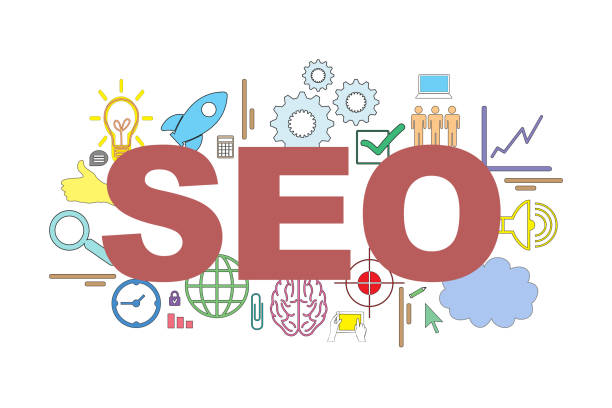
Images and other media play a crucial role in the visual appeal and message delivery of your content, but if not optimized correctly, they can severely harm your website’s loading speed and, consequently, impact your #On_Page_SEO.
The first step in image optimization is compressing them without significant quality loss.
Many online tools and WordPress plugins exist for this purpose that can drastically reduce your image file sizes.
Newer formats like WebP can also have smaller sizes compared to JPEG and PNG.
In addition to file size, the correct use of Alt Text (alternative text) for images is of paramount importance.
Alt Text not only helps search engines understand the image content (as they cannot “see” images like humans do), but also provides a description of the image content for visually impaired users or those whose images fail to load.
This attribute should include relevant keywords but avoid keyword stuffing.
Naming image files descriptively and including keywords is also recommended.
For videos, using optimized playback systems or hosting them on platforms like YouTube and then embedding them on your site can help reduce server load and increase loading speed.
Furthermore, implementing Lazy Loading (lazy loading) for images and videos, whereby media only loads when the user scrolls to the relevant section of the page, can significantly improve user experience and site speed, and be a crucial part of your #On_Page_SEO strategy.
By observing these points, you can benefit from the visual advantages of media without harming your site’s performance and ranking.
Internal Linking and Improving Site Structure for Better Crawling
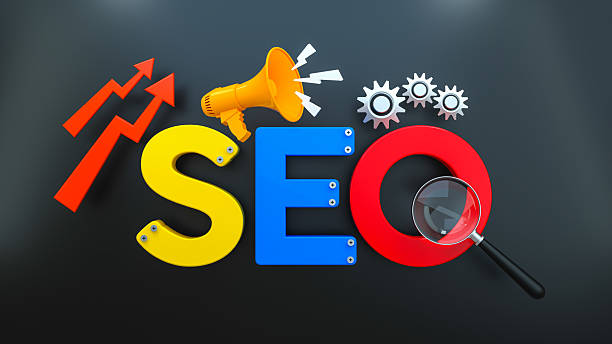
Internal linking is one of the most powerful yet often overlooked #On_Page_SEO techniques that significantly impacts ranking and user experience.
Internal links are links that point from one page on your website to another page on the same website.
These links serve three main purposes: Firstly, they help users easily navigate your website and find relevant content.
Secondly, they help search engines understand your website’s structure and discover and index new pages.
And thirdly, they distribute ranking power (PageRank) across your website, granting more authority to more important pages.
For optimizing internal linking, pay attention to the following points:
- Use appropriate Anchor Text: Anchor text is the visible, clickable text in a hyperlink.
It should be descriptive and relevant to the destination page, and include keywords. - Link to important pages: Ensure that your key and important website pages receive sufficient internal links from other relevant pages.
- Create a hierarchical structure: Organize your website to have a logical and hierarchical structure, moving from the homepage to categories and then to more detailed pages.
- Avoid broken links: Broken links not only ruin the user experience but also send negative signals to search engines.
Regularly check and repair your links.
A strong content strategy that continuously produces relevant content provides a suitable foundation for creating natural and meaningful internal links.
By correctly implementing internal linking, in addition to improving user experience and increasing dwell time on the site, you can significantly help search engines better understand your content and, consequently, improve your #On_Page_SEO ranking.
Technical On-Page SEO: Key Tips and Tools for Optimization

#Technical_On_Page_SEO (Technical SEO) refers to a set of actions performed to improve the technical aspects of a website, making it easier for search engines to crawl, index, and rank it.
This part of #On_Page_SEO, although invisible to users, has a profound impact on the site’s overall performance in search results.
Failure to observe technical considerations can nullify even the best content and strongest keyword strategy.
One of the most important aspects is ensuring crawlability and indexability.
The file robots.txt tells search engines which parts of your site to crawl and which not to.
Also, using a sitemap (Sitemap.xml) helps search engines discover and index all important pages of your website.
Standardizing URLs (Canonical Tags) to prevent duplicate content issues and improve page authority is another vital consideration.
Website security, through the use of HTTPS protocol (SSL Certificate), is now a ranking factor.
Google prefers HTTPS sites over HTTP sites.
Structured data (Schema Markup) also helps search engines better understand your content and display it in richer forms (Rich Snippets) in search results, which can significantly increase click-through rates.
Checking for 404 errors and 301 redirects is also essential for maintaining link authority and user experience.
In the following, a table of important and useful tools in the field of #Technical_SEO is presented:
| Tool | Main Use | Impact on On-Page SEO |
|---|---|---|
| Google Search Console | Monitoring site performance, identifying crawling and indexing errors, viewing backlinks. | Ensuring crawlability and indexability, quickly resolving technical issues. |
| Google PageSpeed Insights | Analyzing page loading speed and providing optimization suggestions. | Improving Core Web Vitals and user experience. |
| Schema.org Markup Validator | Validating structured data (Schema Markup). | Ensuring Rich Snippets display in search results. |
| Screaming Frog SEO Spider | Crawling website and identifying technical issues such as broken links, redirects, meta tags. | Diagnosing and resolving extensive technical issues on the site. |
| Robots.txt Tester | Testing and reviewing the robots.txt file. | Ensuring correct access of Google bots to desired pages. |
Monitoring and Analyzing On-Page SEO Performance with Advanced Tools
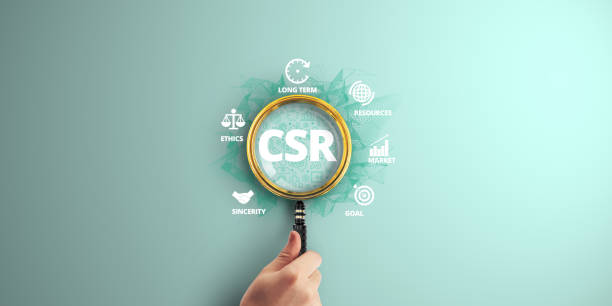
After implementing #On_Page_SEO strategies, your work doesn’t end; it’s just beginning.
Continuous monitoring and precise analysis of website performance are crucial for identifying strengths and weaknesses, new opportunities, and threats.
This analytical process helps you optimize your strategy and leverage your website’s maximum potential.
Google Analytics and Google Search Console are two powerful and free tools from Google that provide valuable information.
Google Analytics allows you to track website traffic, traffic sources, user behavior on the site (such as visited pages, dwell time, and bounce rate), conversion rates, and many other metrics.
This information helps you identify popular content and understand how users interact with your site.
On the other hand, Google Search Console provides a direct view of how Google interacts with your website.
This tool helps you examine the keywords users use to find your site, your pages’ ranking in search results, crawl errors, indexing issues, and sitemap status.
By combining data from these two tools, you can make data-driven decisions to improve your #On_Page_SEO.
For example, if you notice a particular page has a high bounce rate, it might need content revision or user experience improvement.
Or if a specific keyword drives good traffic but its ranking isn’t ideal, you can focus on further optimizing that page.
Regular monitoring and quick reaction to changes are key to sustainable SEO success.
Does your current website convert visitors into customers or drive them away? Solve this problem forever with professional corporate website design by Rasavob!
✅ Build strong credibility and branding
✅ Attract target customers and increase sales
⚡ Get free consultation now!
Google Algorithm Updates and Their Impact on On-Page SEO
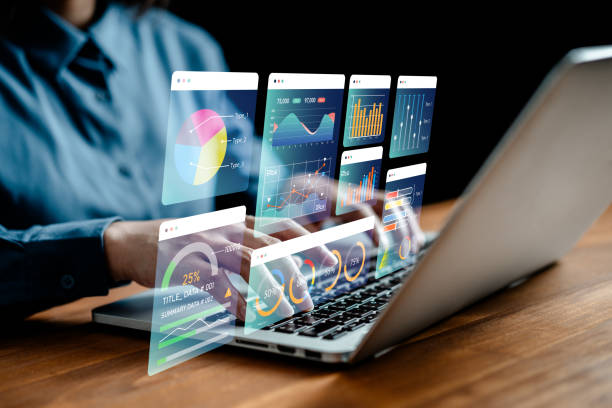
Google constantly updates its algorithms to provide the best search results to users.
These updates, which can range from small daily changes to large, broad updates (Core Updates), directly impact #On_Page_SEO strategies.
For example, in recent years, Google has placed special emphasis on factors such as Page Experience, content quality (E-E-A-T: Experience, Expertise, Authoritativeness, Trustworthiness), and Mobile-first Indexing.
Understanding and tracking these updates are crucial for any SEO specialist.
Core updates typically have a broad impact on website rankings and often focus on content quality and its relevance to user intent.
This means that to maintain and improve your #On_Page_SEO ranking, you must continuously review and update your content in terms of quality, depth, freshness, and relevance to user needs.
Also, attention to technical aspects like site speed and mobile responsiveness, highlighted in Core Web Vitals updates, has become increasingly important.
Responding quickly to these changes and adapting your #On_Page_SEO strategy can keep your website on an upward trajectory.
No matter how much algorithms change, one principle remains constant: Google aims to provide the best and most relevant answer to user queries. Therefore, by focusing on producing valuable content, providing an excellent user experience, and adhering to technical optimization principles, you can make your website resilient against algorithmic fluctuations and surpass competitors.
Studying reputable SEO resources and Google news is the best way to stay informed about the latest changes.
Frequently Asked Questions in On-Page SEO and Key Takeaways
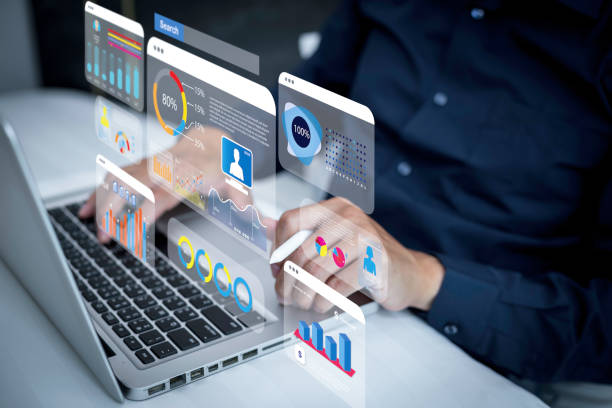
In this final section, we answer some frequently asked questions about #On_Page_SEO and summarize key takeaways to give you a comprehensive overview of this vital field.
1.
What is the difference between On-Page SEO and Off-Page SEO?
On-Page SEO refers to optimizing elements within your website (content, code, structure) over which you have complete control.
In contrast, Off-Page SEO involves activities outside your website (such as backlinks from other sites) that increase your site’s authority and trust in the eyes of search engines.
Both are essential for a comprehensive SEO strategy.
2.
Are keywords still important?
Yes, keywords are still the foundation of #On_Page_SEO.
However, the approach to using them has changed.
Instead of keyword stuffing, you should focus on user intent and the natural use of keywords and related phrases (LSI keywords) to optimize your content for both search engines and users.
3.
How long does it take to see On-Page SEO results?
The time required to see SEO results varies and depends on many factors, including industry competitiveness, the quality of strategy implementation, and the current site status.
However, initial #On_Page_SEO results can typically be expected to appear within a few weeks to a few months (3 to 6 months), while more stable and significant results may take longer.
4.
Is On-Page SEO a one-time process?
No.
SEO, including #On_Page_SEO, is an ongoing process.
Google’s algorithms, user behavior, and competitors are constantly changing.
Therefore, it is necessary to regularly monitor your website, update content, and adapt your strategies to market and algorithm changes.
In summary, #On_Page_SEO is a determining factor in the online success of any website.
By focusing on principles of quality content, excellent user experience, and technical optimization, you can improve your position in search results and attract more targeted organic traffic.
This article was a comprehensive guide for starting and improving your journey in on-page SEO.
Frequently Asked Questions
| Question | Answer |
|---|---|
| What is On-page SEO? | On-page SEO refers to a set of actions performed within your website to improve its ranking in search engine results. This includes optimizing content, site structure, and HTML code. |
| Why is On-page SEO important? | On-page SEO helps search engines understand the content of your page and determine whether your content is relevant to searchers. This is the foundation of any successful SEO strategy. |
| What are the key elements of On-page SEO? | Page title (Title Tag), meta description (Meta Description), keyword usage, image optimization, heading structure (H1, H2, …), internal linking, and content quality are key elements. |
| How to optimize the page title (Title Tag)? | The page title should include the main keyword, be attractive and encouraging for clicks, and be between 50 to 60 characters (or appropriate pixels) in length to be fully displayed in search results. |
| What role does the Meta Description play in On-page SEO? | The meta description is a brief summary of the page’s content displayed below the title in search results. Although it does not directly affect ranking, it helps SEO by increasing the click-through rate (CTR). |
| What is the importance of using heading structure (H1, H2, H3) in On-page SEO? | Headings structure the page content and make it easier to read. H1 is usually the main title of the page and should include the keyword. H2 and H3 are used to organize subsections and help search engines understand the content hierarchy. |
| How to use keywords effectively in content? | Keywords should be used naturally and logically throughout the content, including the introduction, body, and conclusion. Avoid excessive keyword stuffing. |
| What steps are involved in image optimization for On-page SEO? | It involves compressing images to reduce file size, using descriptive file names, adding appropriate alternative text (Alt Text), and optimizing the image title and description. Alt Text is crucial for accessibility and helping search engines understand image content. |
| What is Internal Linking and what are its benefits? | Internal linking means creating links from one page on your website to another page on the same website. This helps users navigate your site easily, distributes page authority across the site, and helps search engines better understand your site’s structure. |
| What is the importance of content quality in On-page SEO? | High-quality, accurate, comprehensive, and valuable content for users is the cornerstone of on-page SEO. Search engines prefer content that meets user needs. Quality content leads to longer dwell time and reduced bounce rate, which are positive SEO signals. |
And other services of Rasa Web Advertising Agency in the field of advertising
Smart Google Ads: A dedicated service for growth in increasing website traffic based on real data usage.
Smart Social Media: Designed for businesses seeking to increase click-through rates through key page optimization.
Smart UI/UX: A dedicated service for improving SEO ranking based on marketing automation.
Smart Data Analysis: A combination of creativity and technology for online growth through Google Ads management.
Smart Customer Journey Map: Designed for businesses seeking online growth through SEO-driven content strategy.
And over hundreds of other services in the field of internet advertising, advertising consultation, and organizational solutions.
Internet Advertising | Advertising Strategy | Advertorial
Resources
Comprehensive On-Page SEO Guide
On-Page SEO for Online Success
Importance of On-Page SEO in Digital Marketing
Advanced On-Page SEO Techniques
? Are you ready for your business to soar with a fast website design and professional digital marketing strategies? Rasa Web Afarin Digital Marketing Agency is your reliable partner on the path to online growth and success. With an innovative and creative approach, we create a powerful and memorable presence for your business in the digital world. Build your business’s future with us.
📍 Tehran, Mirdamad Street, next to Central Bank, Southern Kazeroun Alley, Ramin Alley, No. 6

